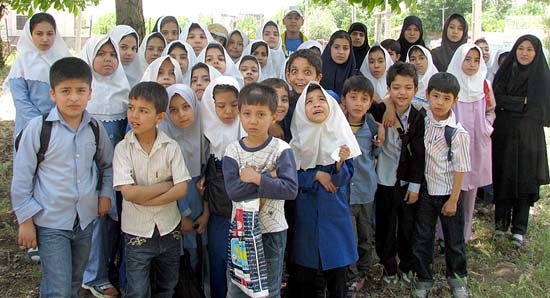
Iran is a country frequently talked about, usually not by Iranians. The 20th Annual Celebration of Iranian Cinema, held at the Billy Wilder Theater and running until Feb. 20, takes a fresh look at new films and documentaries made in the country, giving a glimpse into Iranian culture and society.
Shannon Kelley, head of public programs at the UCLA Film and Television Archive, is the main programmer behind the film series this year.
“This is a place where we are taking the opportunity to look at the most beautiful and recent work created in Iran,” Kelley said. “(Film) was always considered a cultural production as a way for Iranians to interface with the world and Western societies to see them as well.”
Films were chosen on the basis of diversity in forms and content as well as certain filmmakers’ availability to go to the events.
“I had traveled to Iran in 2008 and had a chance to meet people there and talk to them,” Kelley said.
Along with certain film companies’ help, the archive put together diverse forms and experiences that highlight Iranian society and culture.
“It was important for us to have a spread of different film offerings so people could have a sense of what is going on,” Kelley said.
According to Kelley, this year’s film arrangement differs from the past in that it features newer Iranian filmmakers as opposed to identifying with people who later became leading filmmakers and led successful careers.
“There are going to be a number of newer and younger people,” Kelley said. “There is a freshness there, definitely, and an eagerness.”
The screened films deal with social and cultural issues relevant to many Iranians, including women’s roles within the society, the importance of education and the outlook on refugees within the country. However, according to Kelley, these issues are not dealt with in a politically charged way but rather in a more intimate way.
“(The characters) may be asking questions about their own lives and what they are going to do about it. What the films show a lot of the time is resourcefulness and making a life (that) they want to live,” Kelley said.
Professor of Persian language and culture Latifeh Hagigi, has always encouraged her students to attend these screenings.
“Through (these films), you see Iran more than anything else,” she said. “You see different social issues and problems that you can relate to. The whole thing is to create awareness because many young generations haven’t even been out of the United States. … Even if you don’t travel, through these films, it is like you traveled to Iran, and that gives you a different perspective than what you see on the news.”
Hagigi said that some of these films might bore students who expect to see a stereotypical Hollywood film, but she said she believes that people should look at the films in a more documentary light in order to better understand Iranian issues.
“It is interesting to read about them, but seeing them in a film, it has a much stronger impact on you,” Hagigi said.
Laura Moeini, the administrative chair for UCLA’s Iranian Student Group, attended the first screening of “Heiran” on Friday. The film depicts the relationship between an Iranian girl and an Afghan refugee.
“I am familiar with Persian cinema. … They are all tragedies in a way,” Moeini said. “You know life is hard, and a lot of these Iranian directors want to portray that. The film on Friday was extremely well-done and probably one of the best Persian films I have ever seen. How moving it is just shows how good of a job the director did.”
Moeini also found that these films tend to give a personal story to the situations currently in Iran.
“We have heard so much about Iran in the news recently. … It’s just that these movies really put an individual face on it. They are just really well-done movies from another part of the world. While it is educational, (“˜Heiran’) is a good, decent movie to go see,” Moeini said.
Along with the screenings, two question-and-answer sessions will be held with some of the filmmakers. The first will be with Khosro Masoumi, who directed “Tradition of Killing Lovers” and “Winds Blow in the Meadow,” which screens today. Actress Gohar Kheirandish, who plays the mother figure in “Tradition of Killing Lovers,” will also be in attendance.
The second session will be held on Feb. 17 with the director of the documentary “Tinar,” Mahdi Moniri, which screens on Feb. 14.
“It’s just a special time for interested people from UCLA to meet people who they would not usually get to meet,” Kelley said.
Kelley said she hopes that through this series, people will see another side to Iran and its people.
“Iran is a place that gets talked about a lot, and the people of Iran only get a few chances to talk about themselves,” she said. “I hope we will see some chemistry between the audience and the artist, and that they will also come away with the fact that Iran is a complex place with many facets to (its) culture.”
